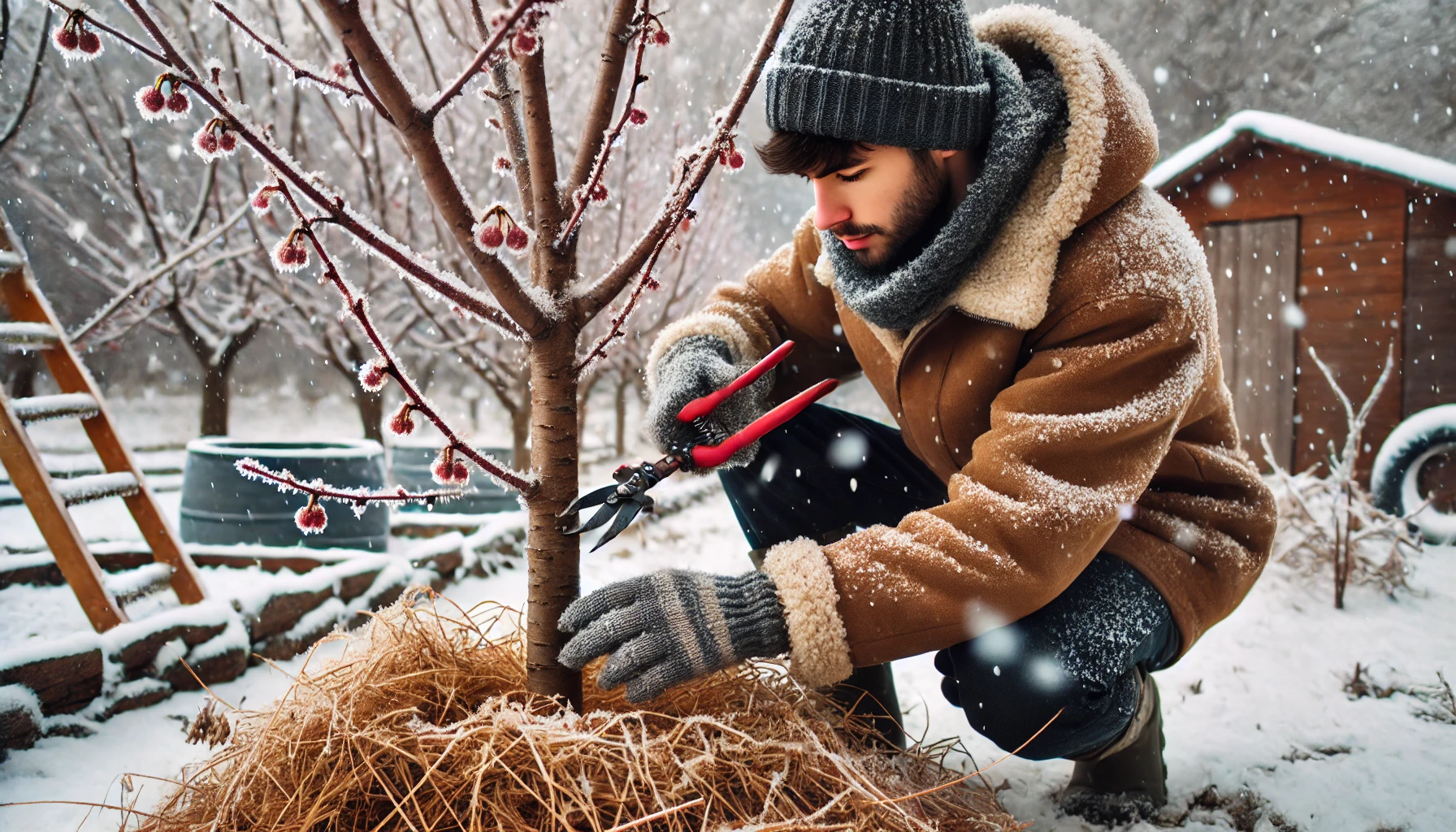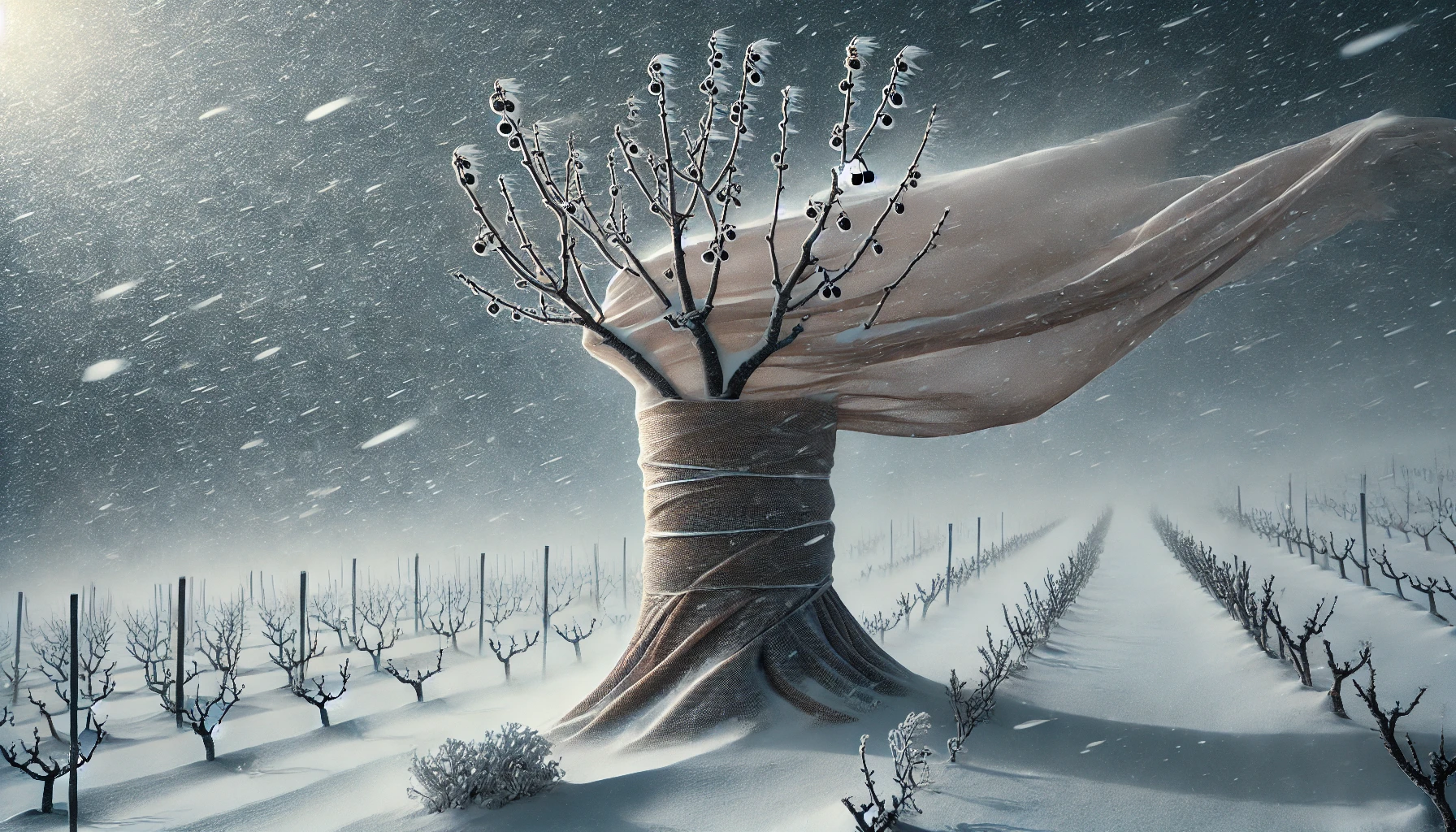
How to Care for Cherry Trees During the Winter Months: Essential Tips for Healthy Growth
Winter can be a challenging season for cherry trees, but with the right care, they can emerge stronger and healthier in the spring. Understanding how to care for cherry trees during the winter months is crucial for protecting them from harsh cold, frost damage, and other seasonal stressors. By taking the necessary steps to shield your trees from the elements, you can ensure a bountiful harvest when warmer weather returns. In this guide, we’ll walk you through essential tips to help your cherry trees thrive through the winter, setting them up for a vibrant growing season ahead.
Table of Contents
ToggleUnderstanding Winter Challenges for Cherry Trees 
Cherry trees face several challenges during the winter months, and understanding these obstacles can help you better prepare for the colder seasons. 
- Cold Temperatures
- Cherry trees are sensitive to extreme cold. Freezing temperatures can damage the buds, causing poor spring growth or a lack of blooms. If your cherry tree isn’t well-suited for your climate, winter chill may hinder its ability to produce fruit.
- Frost Damage
- Late frosts in early spring can occur after a mild winter, damaging the delicate blossoms of cherry trees. To avoid this, ensure your tree is planted in a location that minimizes frost risk.
- Wind Exposure
- Cold winds can desiccate the tree’s bark and branches, leading to damage. Wind protection such as fences or screens can help shield your tree and prevent stress.
- Winter Sunscald
- In winter, intense sunlight can heat the tree’s bark during the day and cause it to freeze at night. This can lead to cracks or sunscald, which makes the tree more vulnerable to pests and diseases. Wrapping the trunk can protect it from sunscald.
- Water Stress
- While cherry trees need less water during the winter, they still require occasional hydration. Lack of water due to frozen soil can stress the tree. Be sure to water deeply before the ground freezes.
By addressing these winter challenges, you’ll set your cherry tree up for a healthier spring growth season and more abundant fruit production!
Essential Winter Preparations for Cherry Trees 

As winter approaches, it’s essential to prepare your cherry tree for the colder months. Proper winter care helps ensure a healthy and thriving tree in the spring! Here are the essential steps to get your cherry tree ready:
- Prune Dead or Damaged Branches
Trim any dead or damaged branches before winter sets in. This helps prevent further damage from wind or snow. Ensure the cuts are clean to encourage healthy regrowth in spring.
- Mulch Around the Base
Apply a layer of mulch around the tree’s base to protect the roots from freezing temperatures. Use organic mulch, such as straw or wood chips, to maintain moisture and regulate soil temperature. - Water Well Before Freezing Weather
Deep watering before the cold hits is crucial. Make sure your cherry tree is well-hydrated, as this helps it survive winter dormancy. However, avoid overwatering during the colder months. - Wrap the Trunk for Protection
Wrap the trunk with burlap or tree wraps to prevent damage from frost cracks or rodent activity. This adds an extra layer of insulation to your tree. - Cover the Tree with Burlap or Shade Cloth
If you live in an area with harsh winters, consider using burlap or shade cloth to protect the tree from strong winds and extreme cold. This is especially helpful for young or newly planted cherry trees.
By following these winter preparation steps, you give your cherry tree the best chance to thrive when warmer weather returns!
Protecting Cherry Trees from Harsh Weather 

Cherry trees are beautiful, but they can be vulnerable to extreme weather conditions. Whether it’s heavy snow, cold winds, or unexpected frost, taking the right steps to protect them will ensure they thrive year-round. Here’s how to keep your cherry trees safe:
- Use Mulch for Insulation
Applying a thick layer of mulch around the base of your cherry tree helps insulate the roots during cold weather. It keeps the soil temperature stable and prevents frost from damaging the roots. - Cover the Tree with a Blanket
During a frost or unexpected freeze, covering your cherry tree with a frost cloth or blanket can help protect its branches and buds. Be sure to remove the cover in the morning so it doesn’t trap heat.
- Windbreaks for Protection
Strong winds can cause stress to your cherry tree, especially when it’s in full bloom. Planting windbreaks, such as shrubs or fences, around the tree can shield it from harsh gusts. - Prune Dead or Damaged Branches
Pruning before winter helps eliminate weak branches that may snap under the weight of snow or ice. This also improves airflow and reduces the risk of disease, which is important for tree health during the colder months. - Provide Support for Heavy Snow
If you’re expecting heavy snow, consider gently tying the branches together using soft twine. This will help prevent snow from accumulating on the branches and causing breakage.
By following these simple steps, you can give your cherry tree the best chance of surviving harsh weather and flourishing each season!
Monitoring and Maintaining Cherry Trees Through Winter 
Cherry trees need extra attention during the winter to thrive when spring arrives. Here are some expert tips to keep them healthy:
- Keep an Eye on Temperature Fluctuations
- Cherry trees are sensitive to temperature swings. Sudden warm spells can trick the tree into budding early, risking frost damage. Monitor the weather and take action if necessary.

- Cherry trees are sensitive to temperature swings. Sudden warm spells can trick the tree into budding early, risking frost damage. Monitor the weather and take action if necessary.
- Watering Wisely
- While the tree’s water needs are reduced in winter, ensure the soil doesn’t dry out completely. Water when needed, especially during dry spells.
- Mulch for Protection
- Apply a thick layer of mulch around the base to insulate the roots from extreme cold. Use organic mulch like wood chips or leaves to help retain moisture and provide nutrients.
- Pruning
- Avoid heavy pruning in winter. Only remove any dead or diseased wood. Wait until late winter or early spring for more extensive pruning.
- Check for Pests and Diseases
- Even in winter, pests like aphids or scale can be a problem. Inspect your cherry tree for any signs of infestation and treat with dormant oil if necessary.
- Protect from Animals
- In some areas, deer and rabbits can chew on cherry tree bark during winter. Use protective tree wraps or fencing to keep them safe.
By following these steps, your cherry tree will remain strong and ready to bloom beautifully when the warmer months return.
Post-Winter Care: Preparing for Spring 
After the cold winter months, your plants are ready to stretch their roots and soak up the warmth of spring! 
- Clear Away Debris
Start by cleaning up your garden bed. Remove any fallen leaves, dead plants, or other debris that might harbor pests or disease. This will also improve air circulation and keep your plants healthy. - Inspect Your Plants
Check for any signs of winter damage, like broken stems or branches. Trim these back to encourage healthy growth. Make sure your plants are still in good shape to thrive as the weather warms up.
- Fertilize for Growth
Give your plants a nutrient boost by applying a balanced fertilizer. This helps them recover from winter dormancy and promotes strong spring growth. Be sure to follow the recommended application rates. - Prune Dead or Diseased Branches
Pruning is essential for preventing disease and encouraging new growth. Remove any dead, damaged, or diseased branches to ensure your plants have room to thrive. - Check Soil Health
Test your soil’s pH and nutrient levels. Add compost or organic matter to enrich the soil. This helps ensure your plants get the nutrients they need for the growing season. - Water Wisely
As temperatures rise, your plants will need more water. Make sure your garden is properly hydrated, but avoid overwatering, which can lead to root rot.
By following these simple steps, you’ll ensure your garden gets off to a strong, healthy start this spring! 
Final Tips


Caring for cherry trees during the winter months is essential for ensuring they stay healthy and strong, ready to thrive when spring arrives. By taking the necessary steps—such as proper pruning, mulching, watering, and protecting against harsh weather—you can safeguard your tree from winter’s challenges. Remember, a little preparation goes a long way in maintaining the health of your cherry trees, leading to a bountiful harvest in the warmer months. With the right care, your cherry trees will emerge from the winter months stronger than ever, setting the stage for a fruitful growing season ahead. Stay proactive and be patient—healthy cherry trees are worth the effort!
Frequently Asked Questions(FAQ)
Why is it important to care for cherry trees during the winter months?
Caring for cherry trees in winter helps protect them from frost, extreme cold, and potential damage from snow and ice. Proper winter care ensures the trees stay healthy and can thrive when the growing season begins in spring.
When should I prune my cherry trees for winter?
Prune your cherry trees in late fall, just before the first frost, to remove dead or diseased branches. Avoid pruning in winter, as it may expose the tree to cold damage.
How can I protect my cherry trees from frost?
Wrap the trunk of your cherry tree with burlap or frost cloth to prevent frost damage. You can also cover the buds and young branches with a frost blanket or cloth during extremely cold spells.
How can I mulch my cherry tree properly for winter?
Apply a 3-4 inch layer of mulch around the base of the tree, making sure not to pile it against the trunk. This helps to insulate the roots, retain moisture, and protect against freezing temperatures.
Should I water my cherry trees during winter?
Yes, water your cherry tree thoroughly before the ground freezes, especially during dry spells. However, avoid overwatering as it can cause waterlogging, which may harm the roots.
Can I use a tree wrap to protect my cherry tree from the cold?
Yes, using a tree wrap can help prevent frost cracks and bark damage caused by freezing temperatures. Be sure to use breathable materials like burlap that allow air circulation while offering protection.
How can I prevent snow and ice from damaging my cherry tree branches?
To prevent breakage, gently remove snow or ice from branches using a soft broom or cloth. You can also support weaker branches with stakes or tie them together to prevent them from snapping under the weight of the snow.
What are the signs of winter damage to cherry trees?
Look for signs such as blackened or shriveled buds, cracked bark, or broken branches. If you notice these symptoms, take steps to prune the damaged areas and protect the tree from further cold stress.






















